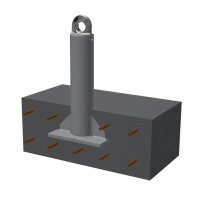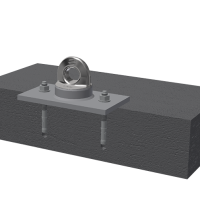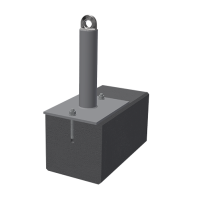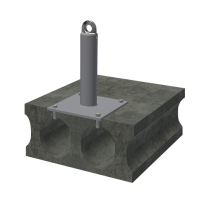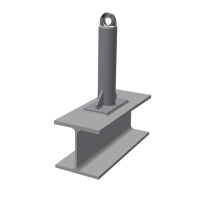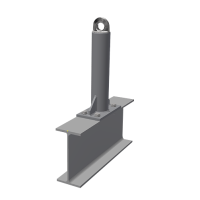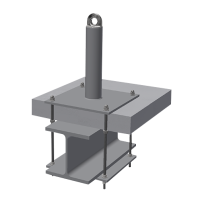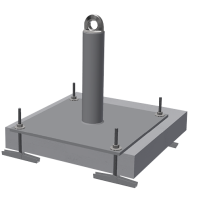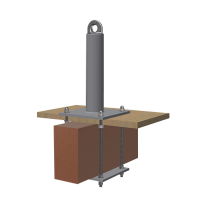The original of the fall protection
Securants
Anchors are permanently usable, temporary anchor points / rope protection for attaching personal protective equipment against falls.
- The original from 1971
- for various substrates
- with cast stainless steel eyelet
- hot-dip galvanized inside and out
- no deformation in the event of a fall
- manufactured according to the provisions of EN 1090-1: 2012-03
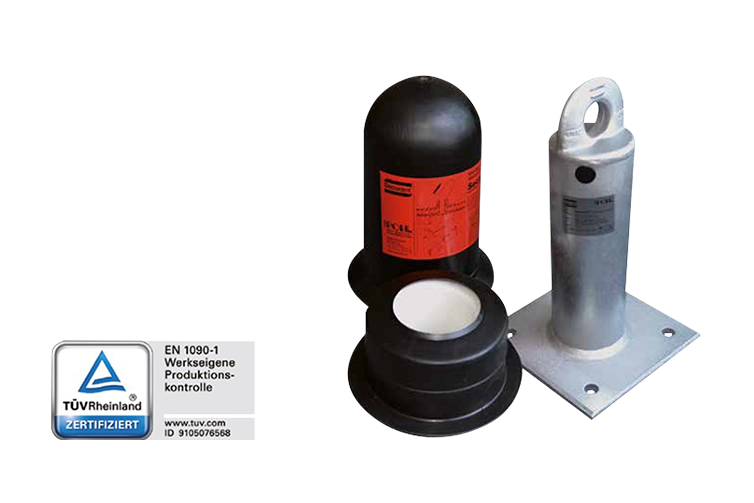
concrete
metal
Push-through mounting
wood
Securant type 2
Setting in concrete
Securant type 3
Dowel
Securant type 4
Dowel
Securant type 11
Dowel
Securant type 5
Welding
Securant type 6
Unscrew
Securant type 7S
Push-through mounting
Securant type 12
Push-through mounting
Securant type 8
Push-through mounting
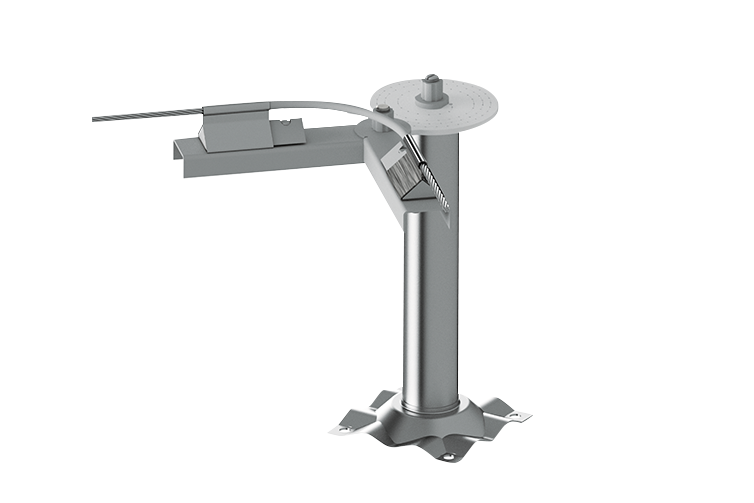
Rope systems
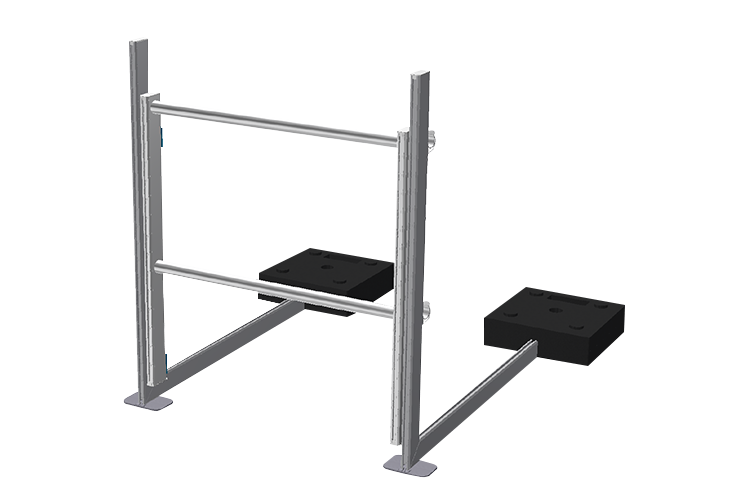
Collective protection
What is a securant?
An anchor is an attachment point that is used as a safety point for personal safety systems when working at heights. These are products that are firmly connected to the building. Most of the time, you hook yourself in with an eyelet, straps and safety systems. This is how personal safety systems are created for workers who have to do special work at heights on roofs.
Anchors are attachment points which, depending on the material and type of the connected safety system, serve as anchor points and connect the fall protection with the building, with the structure. An anchor must consist of high-quality goods, i.e. particularly stable materials, and be professionally attached. Because this is the only way to maintain the necessary force and transfer it to the construct.
In order to ensure the necessary security, every anchor is subjected to special security tests. Only tested anchors may be used for fall protection at heights. A securing agent must be optimally selected for the respective material and also be able to transfer at least 6 kilonewtons of force to the structure.
What are securants used for?
Anchors serve as attachment points for personal fall protection. Above all, these protect professional groups such as firefighters, roofers, industrial climbers or all other workers at heights from falling. This is because fall protection is required by law for work from a height of 1 meter in the various areas.
- Fall protection must always be used for work on and above the water. The height does not matter here.
- For work on traffic routes, fall protection is prescribed from a working height of 1 meter.
- For all other work, fall protection must be used from a height of 2 meters.
Where is a securant employed?
There are many areas of work at different heights. Securants are mainly used on roofs, flat roofs or various machines and constructions. This means that different types of personal fall protection can be installed and thus ensure safety when working at heights.
Because safety plays an important role, especially at heights. Anchors offer different options and variants for fall protection on roofs, flat roofs, machines, in open stairwells or at other wall openings.
What are the different types of anchor?
Depending on the type of structure, the building and the type of security system used, there are different anchors, which are also referred to as attachment points.
Anchors can be used as individual anchor points; in this case, the individual anchors have an eyelet, which then serves as a connection with the personal safety system and the straps.
Anchors can also be used as attachment points for rope or rail systems. A wire rope is placed over the various anchors. The workers connect the personal safety system and can thus act more flexibly and have a wider range of motion. This also applies to rail systems in which a so-called slider is installed, which provides a wider range of motion. The anchors and the respective system can also be installed overhead and thus offer even more freedom of movement.
The anchors must be selected depending on the subsoil and the material of the building, the construction, because the necessary force can only be absorbed if they are matched to the respective material of the subsoil.
Which securants are best suited where?
Securants are always used when personal fall protection is to be installed. Personal fall protection systems are safety systems that are designed to protect individuals from falling or to catch them.
The various anchors are suitable depending on the work and the nature and structure of the work surface. Above all, a distinction must be made between permanent anchorages and temporary anchorages.
- Permanent anchors are mainly installed on roofs and machines that have to be serviced or cleaned over and over again. In this way, security is guaranteed in the long term and the effort involved in securing the amount is significantly lower.
- Temporary anchors can always be reinstalled and attached again after use. Here, too, there are different variants, tripods, clamps and anchors that work with their own weight are among the temporary anchors. These are mainly used by fire fighters or roofers. In this way, good fall protection is provided even at heights at which no work is otherwise carried out.
Otherwise, the anchors must be adapted to the subsurface, the material to which they are applied. There are also various anchors for the respective rope and rail systems, which are ideally suited to provide more freedom of movement during work.
What are the legal requirements for securing staff?
Securants are always required when individual people need to be protected from falling at the prescribed height.
The anchors themselves have to comply with DIN standards in order to be able to guarantee the necessary load-bearing capacity and thus safety.
Safety systems such as rope safety systems and rail safety systems as well as permanent individual attachment points are firmly connected to the building and therefore fall under the general building inspectorate approvals. These need to be reviewed and approved.
The temporary anchors, on the other hand, fall under the DIN standard EN 795 and must be tested and certified according to the requirements of the standard. This is how security is guaranteed.
How often does a securant have to be checked?
But not only the certification of the security staff is important, because once installed, many influences act on the security staff, which can influence the security in the long term. This includes loads, forces during use, wear and tear, wear and tear on the material, wear and tear on the subsurface and the fastening material and the weather conditions in the outdoor area.
So that security can always be guaranteed, special provisions apply that define the intervals between the checks of the security staff.
- Securants must be checked once a year. All other personal fall protection devices must also be checked once a year.
- The check may only be carried out by a specially trained expert from the German statutory accident insurance.
Full functionality and safety can only be guaranteed through the annual inspection. In addition, in the event of a fall, the employer is responsible for proving that all checks are carried out correctly. This is checked meticulously in an insured event. This is the only way to ensure that work at heights is reliably secured.

